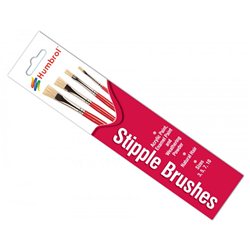Mainline Railways was a British model railway brand that operated between 1976 and 1983, introduced by Palitoy, the...
No products
Product successfully added to your shopping cart
There are 0 items in your cart. There is 1 item in your cart.
Search Tips
Open on Good Friday
The shop will be open on Friday 18th April.
Bring us some chocolate!
How do I remove ballast from my layout?
How you remove ballast would depend on weather you are trying to remove excess ballast after laying and gluing your ballast, or if you are trying to remove an existing section of track for replacement or re-landscaping.
If you are just removing the excess ballast from the over spill after gluing, before the glue has had time to dry the ballast in place, I use a soft bristled 1 inch household paint brush to sweep up the excess. I then make a nice big pile and then use my child's dustpan and brush set to collect all the ballast and add back to the tub for next time.
If you are worried about any ballast being left behind, you could always use the vacuum cleaner to get any remaining ballast from your layout. Use a small paintbrush to sweep out any stragglers from within your points or any moving parts that may be effected by rogue ballast.
If you are trying to remove an established section of track it would depend on what you used to stick the ballast down with in the first place.
If you used Ballast Magic then it is very straight forward: get yourself some warm/hot water and using a sponge apply water to the ballast and it will start to break down the bonding agent allowing the ballast to be removed without damage to your underlay.
If you used watered down PVA, then you have a bit more of a job on your hands, in as much as you will need to get between the ballast and underlay to be able to separate, with a nice flat edged implement such as a pallet knife or a wall paper scraper to gently slide between the ballast and underlay. Be gentle as using this method tends to mess up the underlay if you are too heavy handed. In some cases warm water may help as well.
Click here to receive the tips weekly in your mailbox. You can unsubscribe at any time.










